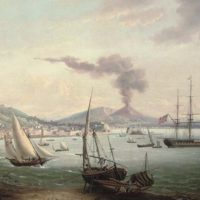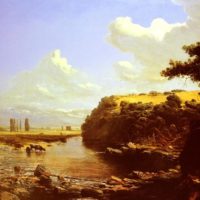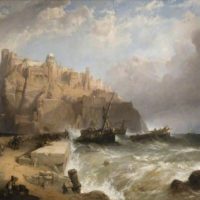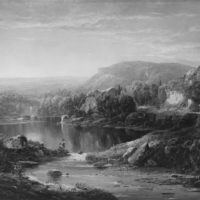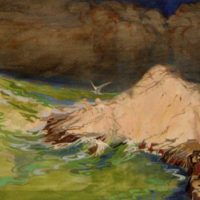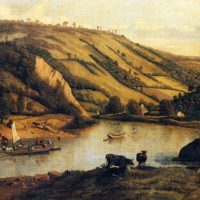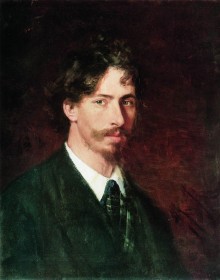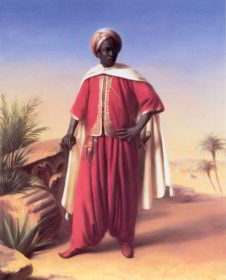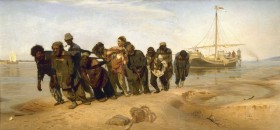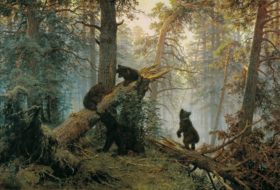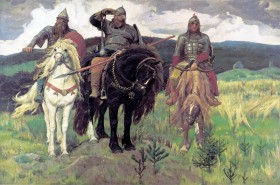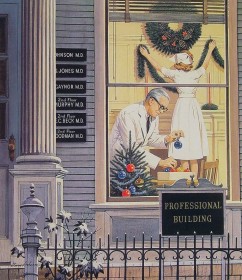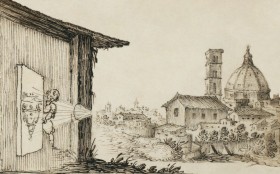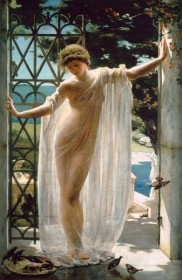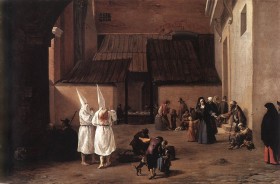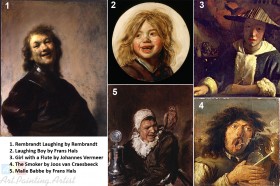Ilya Repin, a painter who enjoyed the similar fame in Russian painting to the Leo Tolstoy in Literature is the very well-known figure in entire Russian artist community. He is respected, looked upon and followed by many new artists. His roots are found in the small town of Chuguyev where he was born on 5th August, 1844. The small child didn’t know what he was going to become until the age of 12. In 1856, he became the pupil of Ivan Bunakov and learned the basics of the art he would live for. The initial learning and attending art schools, academies is a routine for an artist, expect the artist is a self-taught. When he grew up and learned how to handle the brush on […]
Author Archive
In his time, painter of the “Portrait of an Arab”, Horace Vernet didn’t need an introduction, as he worked for the contemporary King Louis-Philippe and Napoléon III of France. Though, he is still remembered with an honor in art-communities. In early 19th century, he was renowned for his great artworks like Dog of the Regiment, Death of Poniatowski and Battle of Montmirail. His fields of interests varied only between portraits, Arabians and battles. And he didn’t want to paint in the traditional ways. He had grown a particular disinclination with traditional idealized ways of paintings. He wanted to draw things with more general touch and feel, instead of giving his subjects an idealized pose; he created his paintings with more vernacular manner. Thus, the viewer […]
A funny experience the artist, Ilya Repin, had was that people were afraid of giving a pose for the painting as there was a belief among illiterate haulers that once a person’s image is put down on a paper, his soul leaves his possession. Finding no model (even after offering a fee) for his painting, he created all of his unique characters during his journey through Russia. The painting represents the hardship of the poor people in old times, around late 19th century. Painter gave importance to the hard life of the haulers by making this grand picture, which he asserted as his first professional painting. That time, the industrial revolution had just begun and a steam boat in far background on the left side […]
Morning in the Pinetree Forest by Ivan Shishkin is rated the second well-known painting in Russia after the Viktor Vasnetsov’s Bogatyrs.The picture is the beautiful depiction of the pine trees with a mother bear and three cubs. The details and the realistic depiction of the jungle, trees, environment and bears are breath-taking for its precise, colors and variety.
A simple painting at first sight, about three soldiers waiting for something or on their way to somewhere is the creation of Viktor Vasnetsov. Though, the importance and reach of the painting is conceived when we know that this ranks as the most popular painting in Russia, pushing Morning in a Pine Forest by Ivan Shishkin at the second place. Seemingly simple painting holds a grand history. The soldiers are the three most popular Bogatyrs of Russian folklore and myths – Alyosha Popovich, Ilya Muromets and Dobrynya Nikitich. Bogatyrs were the folklore heroes who would fight against the enemies and protect the homeland. Anyone could have become a bogatyr, even a peasant. Ilya Muromets was such a peasant before he embarked on the journey of […]
‘Christmas Decorating’ consist, a ‘Professional building’ where works grumpy looking bosses and quiet employees; we can’t imagine such place celebrating something which is always indulged in reaching the goals and finishing the everyday work. Nowadays, the christams fever has reached everywhere. From offices to government to little shops to MNCs and website will look like the Christmas themes is their original theme from the start. But, in old days of 1960s when the American realist artist Steven Dohanos depicted this painting ‘Christmas Decorating’, maybe the professional world was reluctant about expressing their Christmas celebrations openly or maybe they had just started it. “Professional Building” board in the front with clearly given importance in the painting and a doctor and a nurse decorating their ‘professional’ clinic […]
1. Camera Obscura Camera Obscura (dark room) could be said to be the earliest version of photography or capturing-image-on-a-surface to be more precise. The technic of the camera Obscura is the most primitive to capture a scene on a surface. In the method, a flat surface contains a hole in it, through which the light enters and falls on another surface. The image received on the surface is upside down. It could be reversed by a mirror and its precision could be traced. The colors and the details of the scene stay intact. This is the earliest type of image-capturing technique, which grew into being a photography technique and ultimately, in modern world, it is the base of every Camera in the world. Its relation […]
Lesbia is a word making us musing about the contemporary similar sounding word of Lesbian. Although, in the Greek history both words are related at a point, the word Lesbia comprises much more history in it than the shallow modern meaning of the word connected with it. There are two ways in history which leads us to the origin of the word Lesbia and also the woman called Lesbia depicted here. And both ways are connected to each other to some extent. First is the Greek poet Sappho (630 BCE – 570 BCE). She was born on the island of Lasbos, and some historians claims that the modern word Lesbian derives from there as Sappho wrote some poems relating to women’s love of that island. […]
The two people in white robes with their backs wounded by their own torture pulled on themselves are called the Flagellants – the ones who torture themselves for their religious beliefs. It was a common practice Europe in around 13th and 14th century. People revered and honored them until the followers of Flagellantism aroused beyond the expectations of Roman Catholic Church and the Church denounced them heretics. After that the followers of the Flagellantism declined and people also started to ignore such self-harming religious persons. Their popularity declined drastically, though, even today, in different cultures flagellantism in different forms of self-harming exists. Whether it is the women’s self-harming in native African tribes or the 10th day of Muharram on which Muslims beat themselves in the […]
Third installment of the Jargons of the Art-world brings you 10 more technical terms used in the artistic communities. 1. Tronie Tronies were the output of the Dutch Golden Age. Before the Golden Age (17th century) in Netherlands, people were afraid of representing themselves in the portraits. The social pressure made them stand for the portraits in very steady, rigid and emotionless ways. When this barrier was broken in Dutch Golden Age, the fear and restriction were gone and artists began to captures the most hidden emotions of people on their canvases. The subject-person’s importance in the society didn’t matter much. The reason is that they were determined to capture the unique and natural expressions. And this new genre of portraits focusing on the human […]
